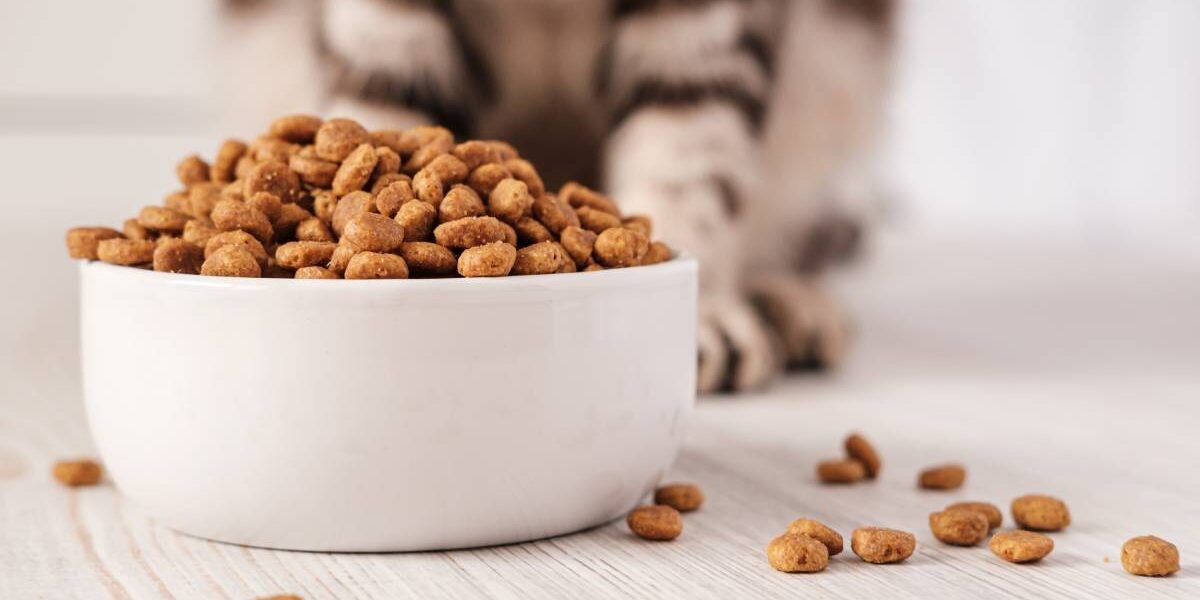Choosing the right food for your cat is one of the most important decisions you can make as a pet owner. Cats have unique dietary needs that must be met to keep them healthy, active, and happy. With so many options available, from dry kibble to wet canned food, it can be confusing to know what to pick.
This article will guide you through everything you need to know to choose the best cat food, understand what makes food high quality, and decide between dry or wet options. By learning how to feed your cat properly, you can help ensure a long and vibrant life for your furry friend.
Why Choosing the Right Food Matters
Cats are special animals with specific needs. They are carnivores, which means they need food that has a lot of meat.
Cats need certain nutrients that come from animals, such as taurine, vitamin A, and protein. Without these nutrients, cats can get sick or have problems like poor eyesight, weak muscles, or skin troubles.
Feeding your cat the wrong food can cause health problems like obesity, diabetes, or urinary tract diseases. That is why it is very important to choose the right food that meets your cat’s needs.
What Should You Look for in Cat Food?
1. Consider Your Cat’s Age and Health
Cats have different needs Cats need different types of food depending on how old they are. Kittens need extra energy and nutrients to grow strong.
Adult cats need food to keep them healthy without gaining weight. Older cats may need special food to support their joints or kidneys. Always pick food that fits your cat’s age and health needs.on their age.
- Kittens need food with more energy and nutrients to help them grow.
- Adult cats need food that keeps them healthy but does not cause weight gain.
- Senior cats might need food that helps with joint health or kidney function.
- Cats with special health issues may need prescription food from a vet.
Make sure to pick food made for your cat’s age group or health condition.
2. Check the Ingredients List
The ingredients list The ingredients list tells you exactly what is inside the cat food. This helps you know if your cat is getting real meat and healthy nutrients. Avoid foods with lots of fillers or vague ingredients that don’t provide good nutrition.you what is inside the food.
- The first ingredient should be a real source of meat like chicken, beef, or fish.
- Avoid foods with too many fillers like corn, wheat, or soy. These do not give much nutrition.
- Watch out for vague ingredients like “animal by-products” which are low quality.
- Look for added vitamins, minerals, and taurine because cats need these to be healthy.
3. Look for Nutrition and Quality Assurance
Choose cat foods that meet official standards. In many countries, cat food should meet rules from groups like AAFCO (Association of American Feed Control Officials) or other food safety authorities. These groups check if the food gives all the nutrients your cat needs.
How to Tell If Cat Food Is Good Quality
Not all cat foods are made the same. Here are some signs of good-quality cat food:
- Clear and detailed ingredient list: Real meat at the top and no fillers.
- No artificial colors, flavors, or preservatives: These can be harmful.
- Tested nutrition: Approved by official organizations for safety and completeness.
- Recommended by vets: Sometimes vets suggest certain brands or types for health reasons.
- Easy to digest: Your cat should not have stomach problems or diarrhea.
- Good packaging: Food should be fresh and well-sealed.
If you see bad reviews, recalls, or vague labels, avoid that food.
Dry Cat Food vs. Wet Cat Food: Which Is Better?
There is no one answer that fits all cats. Both dry and wet cat food have good and not-so-good points. The best choice depends on what your cat needs and likes. Knowing the benefits of each helps you pick the right food for your cat.
Dry Cat Food (Kibble)
Pros:
- Easy to store and lasts a long time.
- Usually cheaper.
- Helps reduce tartar on teeth by chewing.
- Easy to measure and feed without mess.
Cons:
- Low moisture, so cats may need extra water.
- Some cats find it less tasty.
- May not be good for cats with urinary or kidney problems.
Wet Cat Food (Canned)
Pros:
- High moisture content helps keep cats hydrated.
- Usually more flavorful and appealing.
- Good for cats with dental problems or who are picky eaters.
- Often higher in protein.
Cons:
- More expensive.
- Needs refrigeration after opening.
- Can be messy to feed.
Mixing Both Dry and Wet Food
Many cat owners give their cats both dry and wet food. This way, cats get different tastes and textures, which they enjoy. Dry food helps clean their teeth, and wet food adds water to their diet.
But be careful to watch how much your cat eats. Too much food can make your cat gain weight. So, give the right amount based on your cat’s health and activity.
How to Switch Cat Food Safely
If you want to change your cat’s food, do it slowly. Start by mixing a small amount of the new food with the old food. Over 7 to 10 days, gradually add more new food and less old food.
This helps your cat’s stomach adjust and stops them from getting upset or refusing to eat. Watch your cat during this time. If they seem sick or stop eating, slow down the change or ask a vet for help.
Additional Tips for Feeding Your Cat
- Feed small, frequent meals: Cats like to eat small amounts often.
- Keep fresh water available: Especially important if feeding dry food.
- Watch your cat’s weight and health: Regular check-ups can catch problems early.
- Avoid feeding human food: Many human foods are unsafe for cats.
Foods That Should Not Be Given to Cats
While it might be tempting to share your food with your feline friend, many common human foods can be harmful or even toxic to cats. Here are some foods to avoid feeding your cat
- Onions and Garlic: These can damage a cat’s red blood cells and cause anemia. Avoid all forms, including powder and cooking.
- Chocolate: Contains theobromine and caffeine, which are toxic to cats and can cause vomiting, diarrhea, seizures, or even death.
- Alcohol: Even small amounts can cause severe liver and brain damage.
- Grapes and Raisins: Can lead to kidney failure in cats.
Conclusion:
Choosing the best cat food means choosing what is right for your cat’s body and preferences. Every cat is unique, so paying attention to their specific needs and tastes is important. Check the ingredients carefully, choose trusted brands, and think about your cat’s age and health.
Whether you feed dry, wet, or a mix, the right food helps your cat live a long, healthy, and happy life. Providing balanced nutrition supports their energy, coat condition, and overall well being. If you are unsure, always ask your veterinarian for advice.











